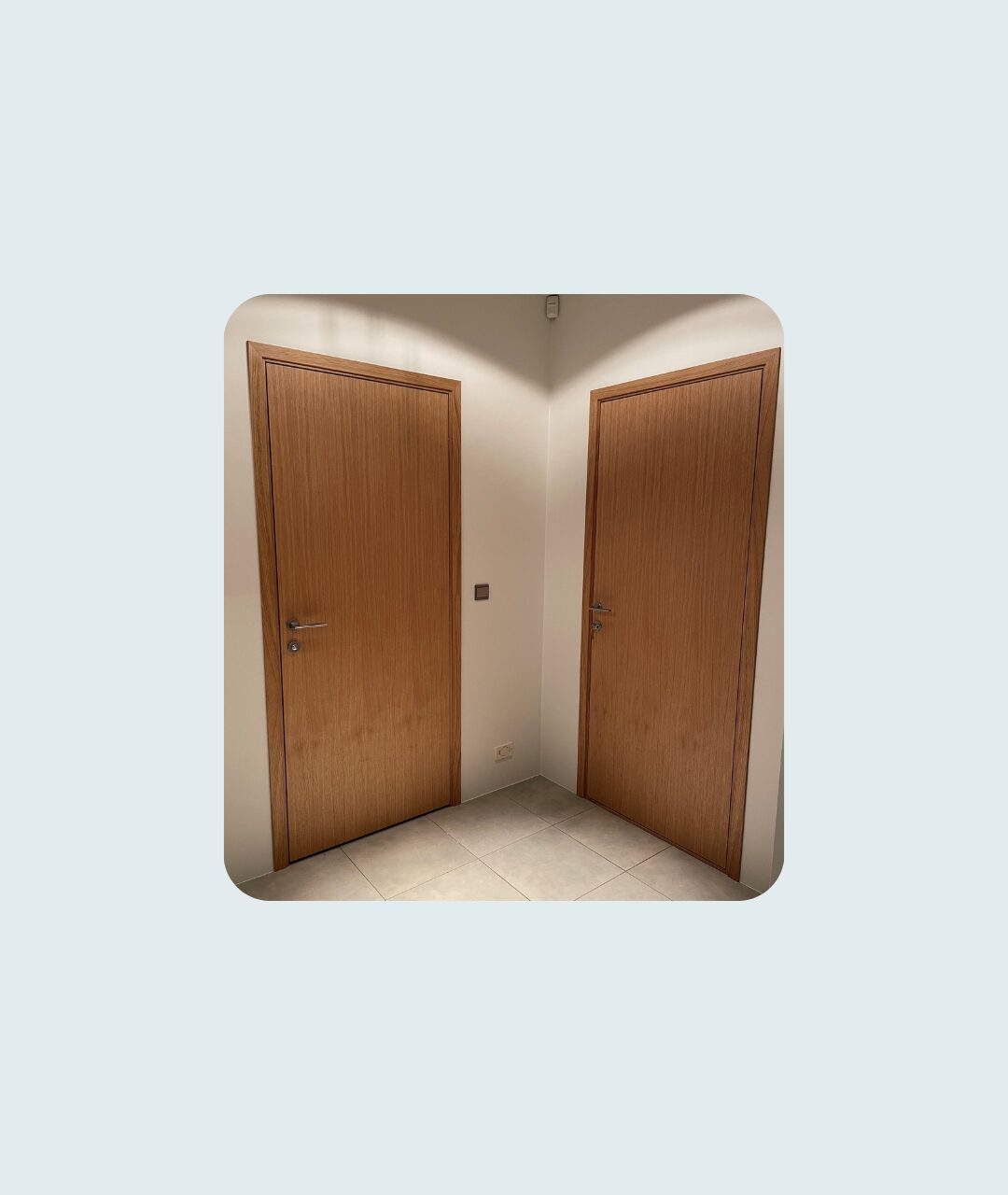The directional opening of interior doors in a single room and the role of L-frames
In contemporary interior design, interior doors are not merely passages; they significantly influence a room’s functionality and movement logic. Increasingly, it is necessary to manage doors opening in different directions within one room—for example, a bathroom door opening inwards, a wardrobe door opening outwards, and a living room door opening in the opposite direction. In such situations, the placement of the doors and the correctly planned L-frames become particularly important.
Why is planning for differently opening doors important?
When a room has multiple door openings that swing in different directions:
* Safe and comfortable movement must be maintained.
* Doors must not collide with each other.
* The door’s opening must support the room’s function.
* The visual integrity must not become chaotic.
This is precisely where correctly selected and installed L-frames come into play, helping to ensure that doors opening in different directions look uniform and aesthetically pleasing in the room.
How Do L-Frames Support Directional Opening?
- Uniform exterior line regardless of opening direction difference
Traditional door casings can leave a different visual impression for left-hand and right-hand doors. The geometry of the L-frame, however, is so minimalist that the doors remain uniformly framed in the exterior view. Even if the door swings in opposing directions. - Clean and concealed doorway finish
In the case of differently opening doors, there may be several doorways side by side. L-frames help to:
* Conceal wall unevenness.
* Create a visual line of the same depth around all doors.
* Avoid extra trim or overlaps that would otherwise spoil the uniform look. - Flexibility in Installation
L-Frames allow for precise adjustment of the doorway for doors opening both inwards and outwards. The installer can:
* Adjust the frame’s position.
* Ensure sufficient opening space for the door.
* Avoid conflicting movement radii (e.g., if two doors block each other).
Practical Recommendations for Planning Differently Opening Doors
- Map out the door movement trajectories. Before installation, it is worth drawing a floor plan and marking where the doors open. This will reveal whether there are any conflicts.
- Use the same design and finish. L-hinges allow you to keep all door edges the same tone and shape. This is especially important in rooms where several doors are in a prominent position.
- Consider maintenance. L-hinges are minimalist and easy to clean and maintain – an important advantage in rooms where doors are used frequently and in different directions.
Summary
Differently opening interior doors in one room do not have to create stylistic confusion. L-frames help to achieve aesthetic unity, functionality, and a clean finish. Regardless of whether the door opens inwards, outwards, or in the opposite direction from other doors.
If you are planning a renovation or new interior design, you should definitely consider both the door opening directions and the type of frames that will create the most harmonious result.
Contact Aru Grupp specialists, and a good result is guaranteed!
Ask for a quote: aken@arugrupp.ee or call for a quote at +372 3295 650
Ask for an offer
Our experienced team is ready to bring your vision to life, whether it’s custom windows, doors, stairs or a house. We offer a professional approach to every project, ensuring a result that meets your exact needs.
To receive a quote, fill out the form and we will contact you!

